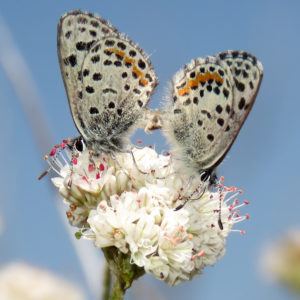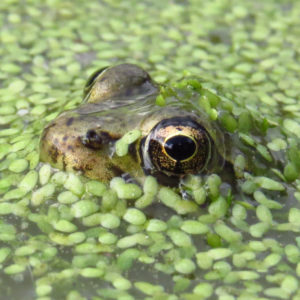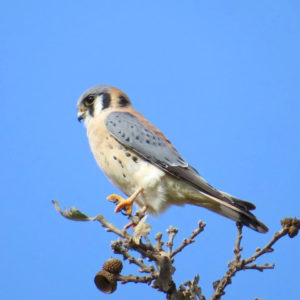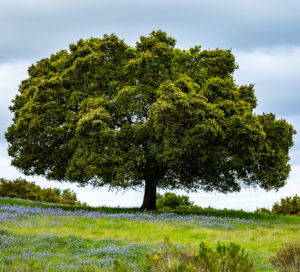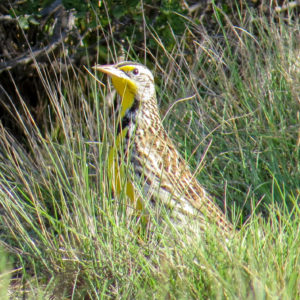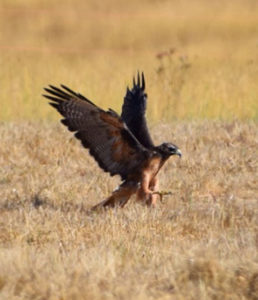The mama bobcat confidently strolled along the sliding glass door. She assiduously surveyed her surroundings like the protective mother that she was but gave off an air of nonchalance like only a bobcat can. Her two kittens bounded along behind her, far less aware or concerned than their mother, utterly clueless of the adoring audience they had on the other side of the glass. But mom knew they had company. She was looking straight at Dee Dee Kim standing inside her home, watching the family wander through the garden. A moment of understanding and mutual respect passed between the two.
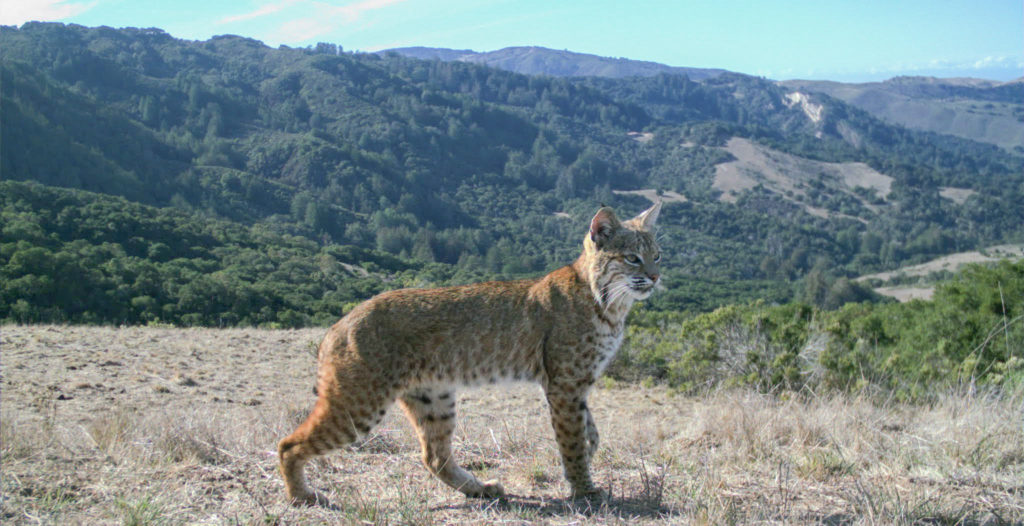
Wild Preserve: Pleased to Meet You, Bob the Cat
 “She looked right through the glass at me, she knew I was there, and she didn’t seem concerned,” Dee Dee said as she recalled one of several visits from the bobcat family. Over the last few months Dee Dee and her family have been entertained by the feline family wandering, playing and sometimes lounging outside of the Kim home on Arroyo Sequoia. To no one’s surprise they became attached to Bob the Cat and her kittens and got immense pleasure watching them grow and explore the forested habitat around the home. “They are a hoot to watch,” Dee Dee joked. “You don’t need a TV…and you don’t need to go on safari” to see incredible wildlife when you live on The Preserve.
“She looked right through the glass at me, she knew I was there, and she didn’t seem concerned,” Dee Dee said as she recalled one of several visits from the bobcat family. Over the last few months Dee Dee and her family have been entertained by the feline family wandering, playing and sometimes lounging outside of the Kim home on Arroyo Sequoia. To no one’s surprise they became attached to Bob the Cat and her kittens and got immense pleasure watching them grow and explore the forested habitat around the home. “They are a hoot to watch,” Dee Dee joked. “You don’t need a TV…and you don’t need to go on safari” to see incredible wildlife when you live on The Preserve.
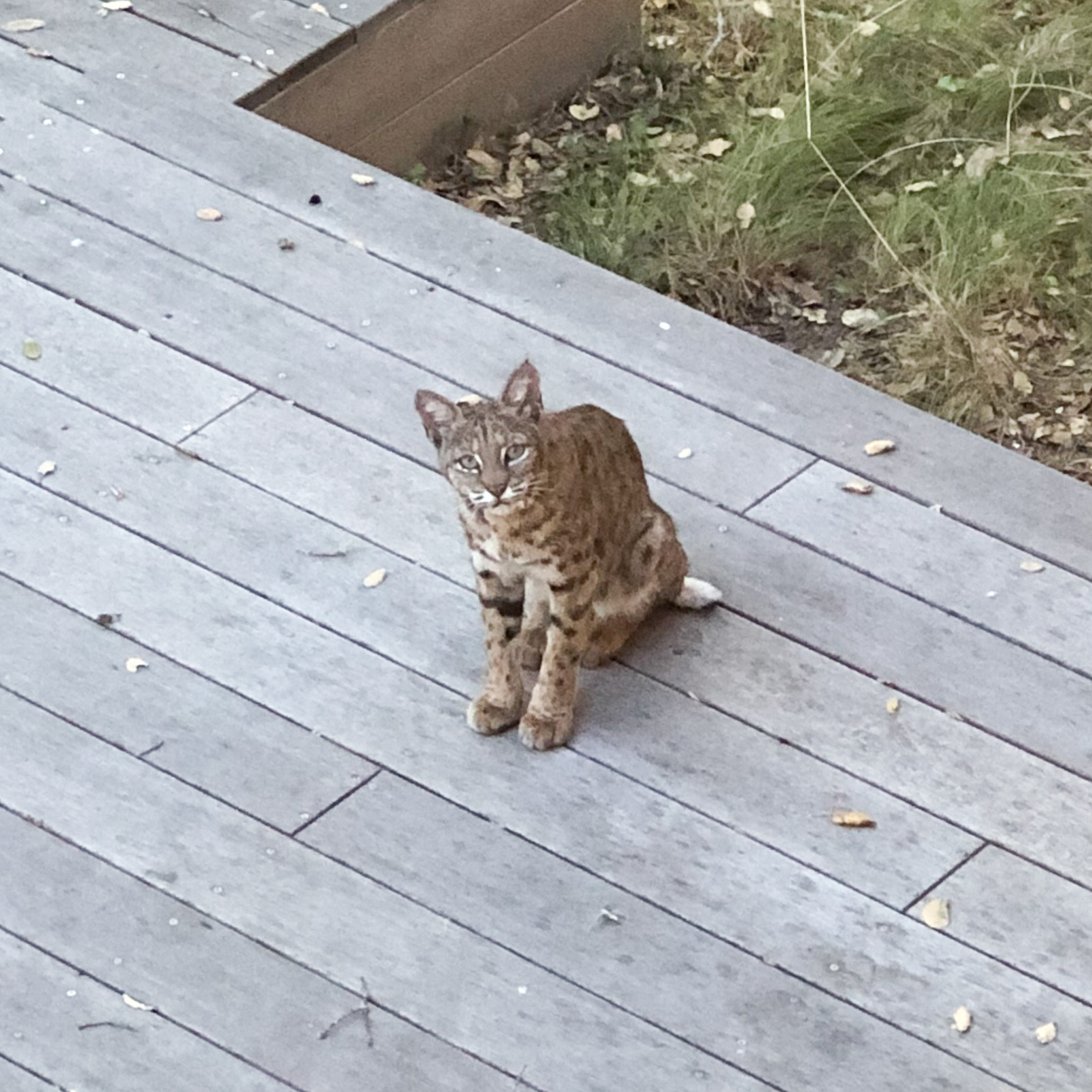 For many community members, this intimacy and the casual encounters with wild neighbors is exactly what attracted them to The Preserve. The Kims moved from the northern Bay Area, where they lived in a more traditional neighborhood with open space behind them and the occasional wildlife encounter, but it was nothing like their experience on The Preserve. Here “you are really living with wildlife, it is more in your face,” said Dee Dee. Then she explained that within a month or two of moving into their home they realized they needed to break some unhealthy habits, like using rodenticides (rat poison). On The Preserve they felt “more of a responsibility to coexist with the land and wildlife” around them. Coincidentally, a Preserve neighbor had just found a dead owl in their fountain, likely due to secondary poisoning from eating a poisoned rodent. At that same time, one of the top news stories was about P-22 the “Hollywood Lion” that was sickened by secondary exposure to rodenticides. It all got Dee Dee to change her thinking from “it is just one mouse, no big deal” to “it is all connected, and we have a responsibility to keep our wildlife healthy.”
For many community members, this intimacy and the casual encounters with wild neighbors is exactly what attracted them to The Preserve. The Kims moved from the northern Bay Area, where they lived in a more traditional neighborhood with open space behind them and the occasional wildlife encounter, but it was nothing like their experience on The Preserve. Here “you are really living with wildlife, it is more in your face,” said Dee Dee. Then she explained that within a month or two of moving into their home they realized they needed to break some unhealthy habits, like using rodenticides (rat poison). On The Preserve they felt “more of a responsibility to coexist with the land and wildlife” around them. Coincidentally, a Preserve neighbor had just found a dead owl in their fountain, likely due to secondary poisoning from eating a poisoned rodent. At that same time, one of the top news stories was about P-22 the “Hollywood Lion” that was sickened by secondary exposure to rodenticides. It all got Dee Dee to change her thinking from “it is just one mouse, no big deal” to “it is all connected, and we have a responsibility to keep our wildlife healthy.”
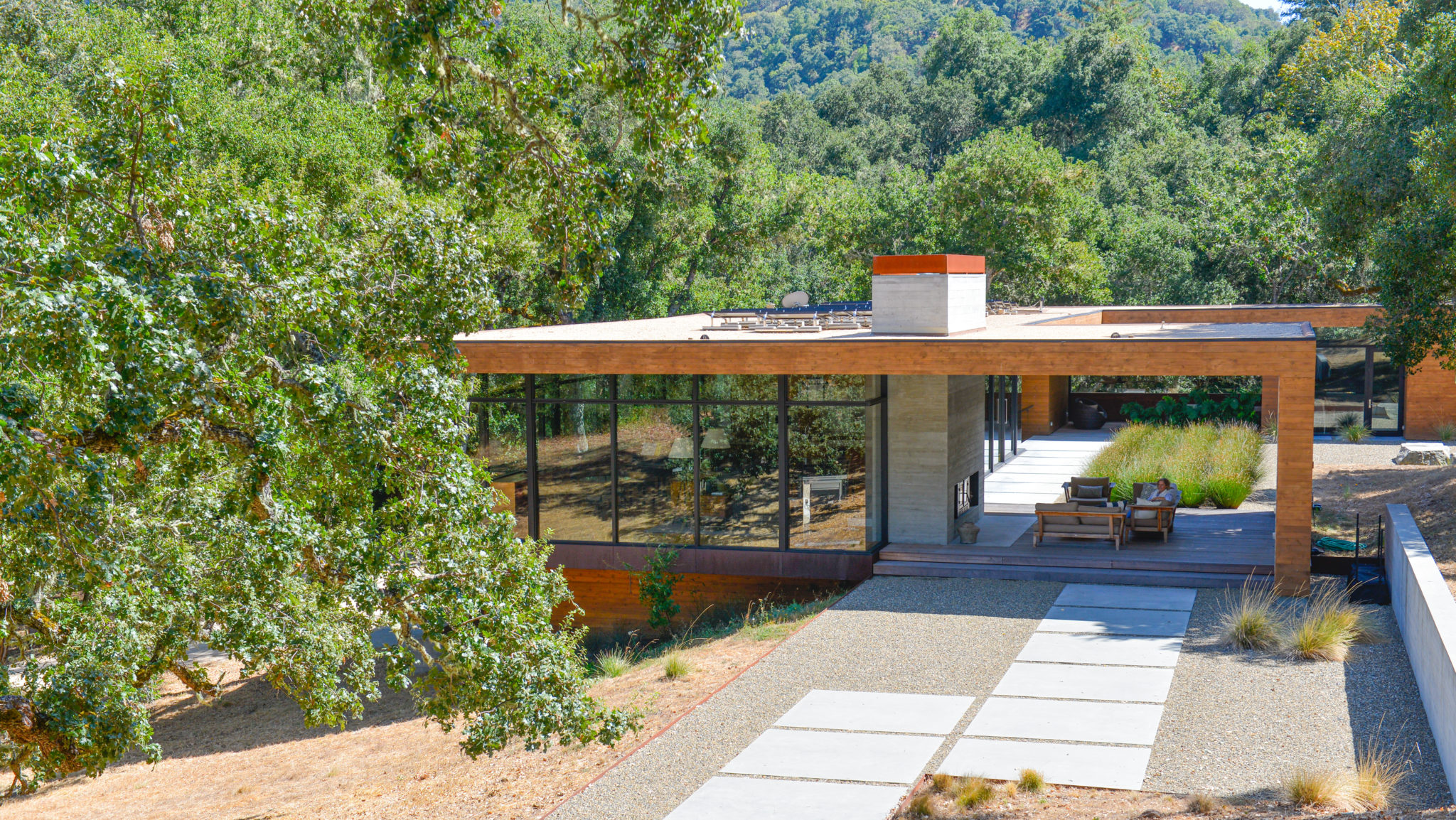 Switching to the poison-free service did not cost much more and was in-line with the health-mindfulness of the Kims. “We are all so health conscious about our own bodies, and we should apply the same values to the creatures we are trying to save and protect.”
Switching to the poison-free service did not cost much more and was in-line with the health-mindfulness of the Kims. “We are all so health conscious about our own bodies, and we should apply the same values to the creatures we are trying to save and protect.”
 The awesome power of this seemingly simple decision was revealed one day in August when Dee Dee noticed Bob the Cat and her kittens outside a window. The mom was fussing with one of the black plastic mouse traps placed outside the family’s home by IPM, the pest management company that works on The Preserve. Dee Dee recounted what happened next.
The awesome power of this seemingly simple decision was revealed one day in August when Dee Dee noticed Bob the Cat and her kittens outside a window. The mom was fussing with one of the black plastic mouse traps placed outside the family’s home by IPM, the pest management company that works on The Preserve. Dee Dee recounted what happened next.
 “She spent the better part of 10- minutes pulling the mouse out of the trap and eating it. She then proceeded to jump onto the deck to nurse one of her babies. It made me so happy that we had changed from poison to poison-free traps for the mice and other pests around our property. An important reminder that I will share with my Preserve friends…poison free is the way to go.”
“She spent the better part of 10- minutes pulling the mouse out of the trap and eating it. She then proceeded to jump onto the deck to nurse one of her babies. It made me so happy that we had changed from poison to poison-free traps for the mice and other pests around our property. An important reminder that I will share with my Preserve friends…poison free is the way to go.”
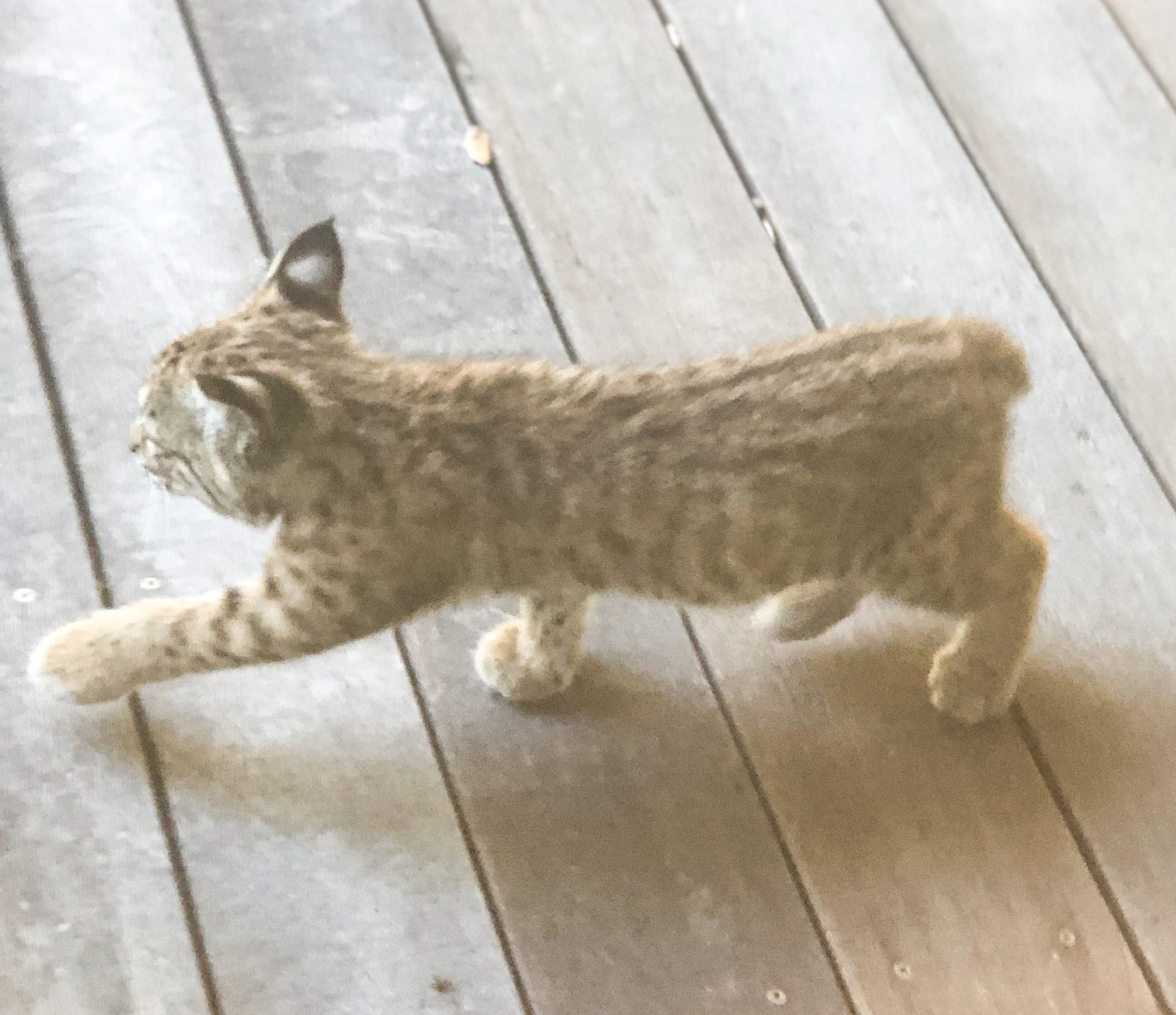 For the first year of their lives these kittens will hang out with mom, Bob the Cat. And why not? As Dee Dee described, they are “comfortable in this space,” much like the Kim family. But eventually, the young bobcats will leave their mother and disperse, seeking a comfortable space of their own to raise the next generation. Dee Dee hopes that wherever they move on to, her neighbors are also poison free, protecting the kittens she now knows as wild neighbors.
For the first year of their lives these kittens will hang out with mom, Bob the Cat. And why not? As Dee Dee described, they are “comfortable in this space,” much like the Kim family. But eventually, the young bobcats will leave their mother and disperse, seeking a comfortable space of their own to raise the next generation. Dee Dee hopes that wherever they move on to, her neighbors are also poison free, protecting the kittens she now knows as wild neighbors.
To join Dee Dee and other community members who’ve committed to protecting wildlife by selecting rodenticide free pest management contact Resident Services at (831) 620-6760.
By Christy Wyckoff
RECENT WILDLIFE ENCOUNTERS
This summer the Conservancy completed its third year of Smith’s blue butterfly surveys. This delicate, dime size butterfly allows itself a short three weeks to: metamorph from the caterpillar to a butterfly, find a mate, decide on which buckwheat plant is best to raise a family, evade hungry predators, lay the next generation of eggs and finally retire. We are happy to report butterflies were found at all four known sites and this year our butterfly populations helped us train local biologists to conduct surveys for other regional projects.
In August Dr. Christy presented some Conservancy research highlights including the cutting-edge application of detecting wildlife by DNA. In partnership with Caren Goldberg at Washington State University, the Conservancy has been conducting environmental DNA (eDNA) surveys. We sample water from ponds where California tiger salamanders and California red-legged frogs are found, to see if we can detect these elusive amphibians. The results are promising, suggesting eDNA could be better evidence of these species, especially in difficult sampling sites. Early success of this project has led to a regional collaboration to try this survey at 200 ponds across the Monterey Bay region!
The Conservancy’s third consecutive Raptor Survey tally was good news all around. We recorded ten different species, including a juvenile golden eagle and its parents on Peñon Peak! When comparing the recent results to surveys conducted in 2009 and 2010, we see some really positive increases in several key species. Numbers for the American Kestrel, a species in decline across North America, are up on The Preserve. Healthy grasslands filled with delicious (to birds of prey) small mammals and the community’s move away from rodenticides (rodent poison) are key elements to this success!
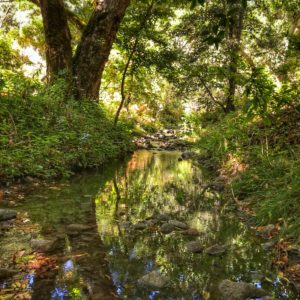
STEELHEAD TROUT
The beginning of fall is a lean time for our steelhead trout. Streams dwindle and insect populations drop. Not until the rains return to replenish the pools and reconnect the creeks to river – and the sea – will these gallant fish find relief. Compared to many though, our native trout are in a good place. Stately redwoods and sycamores shade the water and nourish the food chain. The Preserve community does a great job of water conservation, sustaining flows and native habitat. In return, when peeking into a nearby pool, our odds of finding a wily trout or two, peering right back – are pretty excellent.
Some autumns, oaks produce a small quantity of acorns; other years, a veritable overabundance. These boom years are called “mast” years. Botanists still aren’t entirely sure why oaks choose this cyclical reproductive technique. Hypothetically, years of abundance ensure enough acorns survive predation – being eaten- to successfully germinate. In mast years, the abundance of acorns feed all manner of frugivores, from squirrels to bears. Alternatively, it’s possible such long-lived creatures developed the cyclical method to conserve energy; creating large quantities of acorns is energetically demanding, so non-mast years are time for the trees to rest.
You know it is spring when you hear the buzzy call of the grasshopper sparrow and the melodic song of the Western meadowlark. These two birds are the guests of honor in our grasslands. Their presence indicates to us that the grasslands are suitable for breeding, and the more the merrier! Spring Grassland Bird Surveys confirmed that the birds are still here, though we would like to see their numbers increase. Dr. Christy is working with Rodrigo Sierra Corona and the grazing team to find ways to further support the habitat needs of these and other iconic grassland birds.
A new member and soon to be resident, Robert Kingsley (with his wife Melissa Thorme) captured shots of a red-tailed hawk snagging a snake for breakfast on the Flats. Raptors, or birds of prey, are iconic bird species, often seen soaring in the sky and keeping a hungry eye out for delicious rodents and other small prey like snakes. Binocular vision gives them exceptional depth perception for hunting and their strong feet are used to capture and eat prey. They are truly impressive creatures!
